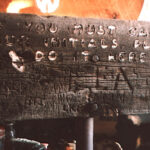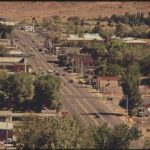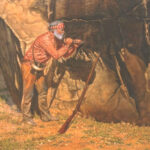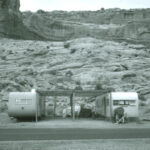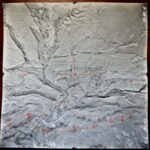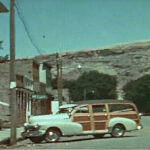
But my photo collections are still images. Trying to locate movie film, especially going back to the 1940s and 1950s has been almost impossible. Sometimes the best I could hope for were John Ford Westerns and one of George Stevens’ last films, “The Greatest Story Ever Told.” All the exterior scenes were shot in Glen Canyon, as the dam was being built.
But recently, and sheerly by accident, I found the film in its entirety on the internet. It had been donated to the National Archives and though the film quality still pales by today’s standards, it is the history in these films and images that I love, more than the film quality itself. Ray and Virginia Garner started making films in the late 1930s. Ray’s first known project was a film about ascending the Grand Teton with a group of Boy Scouts in 1936. Sadly the film has been lost. But it was the beginning of an independent filmmaker career and soon, a wonderful collaboration with his new wife Virginia. Though the title of the film I’m offering here gives credit to Ray, Virginia, or “Jinny” as she was known to everyone, was not only his equal in the filming, production and presentation of what were often silent films, she was certainly more photogenic and appears often in them. That’s’ what gives these 16mm movies such a personal feel. As I understand the story, they toured the country with their movies and at various gatherings, they would narrate the film in person as it was being shown.
Read more →
